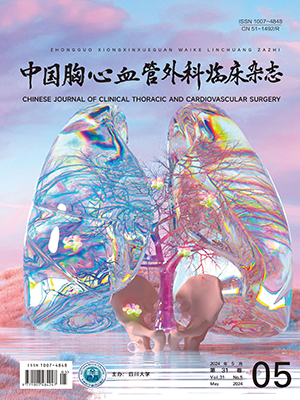Objective To investigate the effectiveness of establishment of chest pain center and optimized process in the diagnostic and treatment progress and short-term prognostic value of acute non-ST segment elevation myocardial infarction (NSTEMI) patients. Methods This was a retrospective study. We included NSTEMI patients admitted in the Emergency Department in our hospital, 41 patients admitted before the establishment of the chest pain center (April 2015) were included as group A (30 males and 11 females at age of 64.7±11.8 years), 42 patients after the establishment of the chest pain center (April 2016) as group B (31 males and 11 females at age of 64.6±11.8 years), and 38 patients after the establishment of the chest pain center (April 2017) as group C (30 males and 8 females at age of 62.6±10.0 years). The clinical outcomes of the three groups were compared.Results The time from admission to electrocardiogram was 20.0 (17.0, 25.5) min in the group A, 4.0 (2.8, 5.0) min in the group B, and 3.0 (2.0, 4.0) min in the group C (P<0.001). The first doctor's non-electrocardiogram advice time was 13.0 (10.0, 18.0) min, 9.5 (6.8, 15.3) min, and 9.0 (7.0, 12.0) min (P=0.001) in the three groups, respectively. The diagnostic confirmed time was 139.4±48.5 min, 71.1±51.5 min, 63.9±41.9 min (P<0.001). The proportion of patients receiving emergency dual anti-platelet load dose treatment was 53.1%, 70.0%, 100.0% (P=0.001), respectively. The time of receiving emergency dual anti-platelet load dose treatment was 208.0 (72.0, 529.0) min, 259.0 (91.0, 340.0) min, and 125.0 (86.0, 170.0) min (P=0.044) in the three groups, respectively. Emergency percutaneous coronary artery intervention (PCI) start time was 60.9 (42.1, 95.8) hours, 61.3 (43.3, 92.2) hours, 30.5 (2.8, 44.1) hours (P<0.001) in the three groups, respectively. Among them, the moderate risk patients’ PCI starting time was 63.0 (48.1, 94.2) hours, 62.3 (42.1, 116.2) hours, and 40.1 (17.2, 60.4) hours (P>0.05), respectively. The high risk patients’ PCI starting time was 47.9 (23.7, 102.4) hours, 55.2 (44.0, 89.6) hours, 23.2 (1.7, 41.8) hours in the three groups, respectively (P<0.001). The hospitalization time of the patients was 7.0 (5.4, 9.4) days, 5.9 (4.9, 8.7) days, 4.7 (3.1, 6.2) days in the three groups (P<0.001), respectively. The hospitalization time of the moderate risk patients was 6.9 (4.9, 8.8) days, 6.4 (4.9, 8.0) days, 4.8 (3.2, 6.5) days in the three groups (P>0.05), respectively. The hospitalization time of the high risk patients was 7.1 (5.5, 9.9) days, 5.9 (4.6, 9.8) days, and 4.4 (3.0, 6.1) days, respectively (P<0.001). The fatality rate of inpatients was 4.9%, 0.0%, and 0.0%, respectively (P>0.05). The correlation coefficient of hospitalization time, diagnosis confirmed time and PCI starting time was 0.219 and 0.456 (P<0.05), respectively.Conclusion The establishment and optimized process of chest pain center can accelerate the time of early diagnosis of NSTEMI, which is helpful to obtain stratified and graded standardized treatment for patients according to their conditions, to accelerate the specific treatment process of high risk NSTEMI patients, and shorten the hospitalization time.
Citation:
ZHANG Qin, LI Dongze, GAO Yongli, CHEN Yao, WAN Zhi. Effectiveness of establishment of chest pain center and optimized process in the diagnostic and treatment progress and short-term prognostic value of acute non-ST segment elevation myocardial infarction patients. Chinese Journal of Clinical Thoracic and Cardiovascular Surgery, 2019, 26(5): 440-445. doi: 10.7507/1007-4848.201809033
Copy




